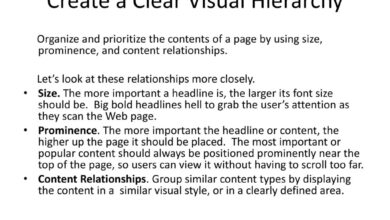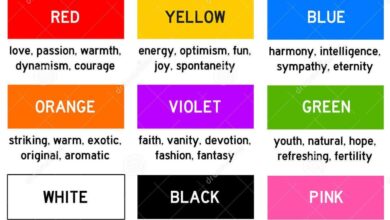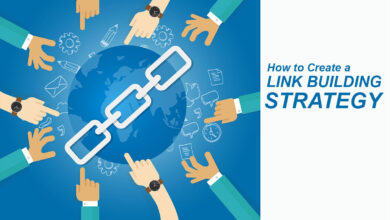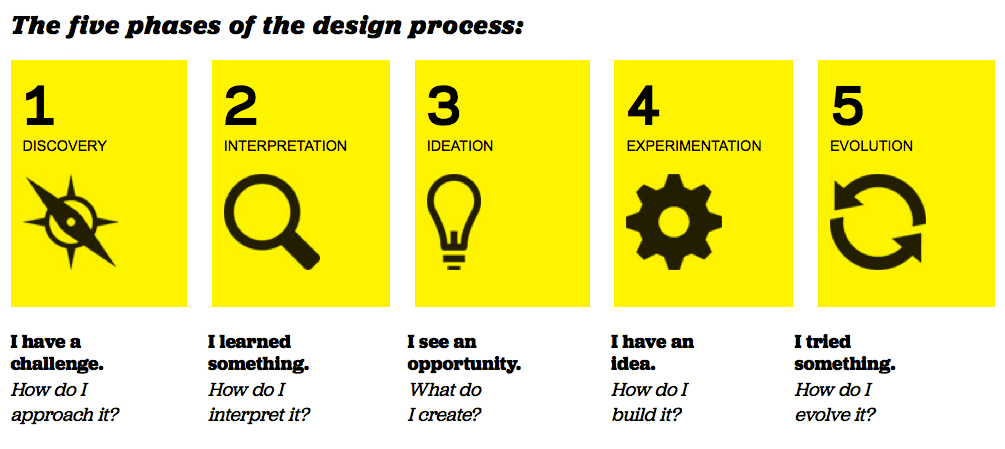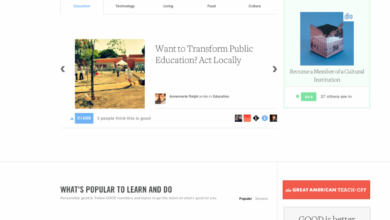
Design for People, Not Awards
Design for people not awards – Design for people, not awards – that’s the core philosophy driving truly impactful design. Forget chasing trophies; let’s focus on creating experiences that genuinely resonate with users. This isn’t about sacrificing aesthetics, but rather about understanding that a beautiful design is useless if it doesn’t serve its purpose effectively. We’ll explore how user-centric design principles lead to better products, happier users, and ultimately, more sustainable success.
This post dives deep into the practical applications of user-centered design, exploring methodologies, case studies, and ethical considerations. We’ll examine how to measure success beyond awards, emphasizing user feedback and data analysis as crucial indicators. We’ll also discuss the importance of empathy and diverse perspectives in creating inclusive and meaningful designs. Get ready to shift your perspective on what truly constitutes successful design.
Defining “Design for People, Not Awards”
The core philosophy of “Design for People, Not Awards” centers on the belief that the ultimate measure of successful design lies in its positive impact on the user, not in the accolades it receives. While awards can be a nice byproduct of excellent work, they should never be the primary driving force behind the design process. The focus should always remain firmly on creating solutions that genuinely improve people’s lives, solve their problems, and enhance their experiences.
This approach prioritizes usability, accessibility, and overall user satisfaction above aesthetic appeal or the pursuit of prestigious recognition.Prioritizing user needs over design awards fosters a more ethical and sustainable design practice. It encourages designers to empathize deeply with their target audience, understanding their needs, limitations, and contexts before embarking on the design process. This human-centered approach results in more effective, inclusive, and ultimately more successful designs.
Examples of User-Centric Design
The success of user-centric design is demonstrable in numerous real-world examples. Consider the evolution of the iPhone’s interface. Early iterations, while innovative, presented some usability challenges. Apple, through iterative design processes focused on user feedback, significantly improved the user experience over time. The simple, intuitive interface of the iPhone, despite not being initially groundbreaking in terms of visual aesthetics, became a benchmark for user-friendly design.
Another compelling example is the design of assistive technologies. These technologies, while not always visually striking, are designed with accessibility in mind, prioritizing the needs of users with disabilities above all else. Their success is measured by their effectiveness in empowering users, not by design awards.
Negative Consequences of Award-Driven Design
Focusing solely on creating award-winning designs can lead to several negative consequences. One major pitfall is the potential for designs to become overly stylized and impractical. The pursuit of aesthetic novelty, often favored by award juries, can overshadow the crucial aspects of usability and functionality. This can lead to designs that are visually impressive but ultimately fail to meet the needs of their users.
For example, a website might win an award for its stunning visuals, but if its navigation is confusing and its content is difficult to access, it fails its primary purpose. Furthermore, an excessive emphasis on awards can distract designers from focusing on the core problem they are trying to solve. The pressure to create something “award-worthy” can lead to designs that are overly complex or unnecessarily innovative, sacrificing simplicity and practicality for the sake of originality.
This ultimately undermines the user experience. Finally, an award-driven approach can stifle innovation by promoting conformity to established aesthetic trends favored by judging panels. Designers might feel pressured to replicate successful styles rather than exploring truly novel solutions that might better serve user needs. This can lead to a stagnation of creative development and limit the potential for truly groundbreaking design.
User-Centric Design Principles
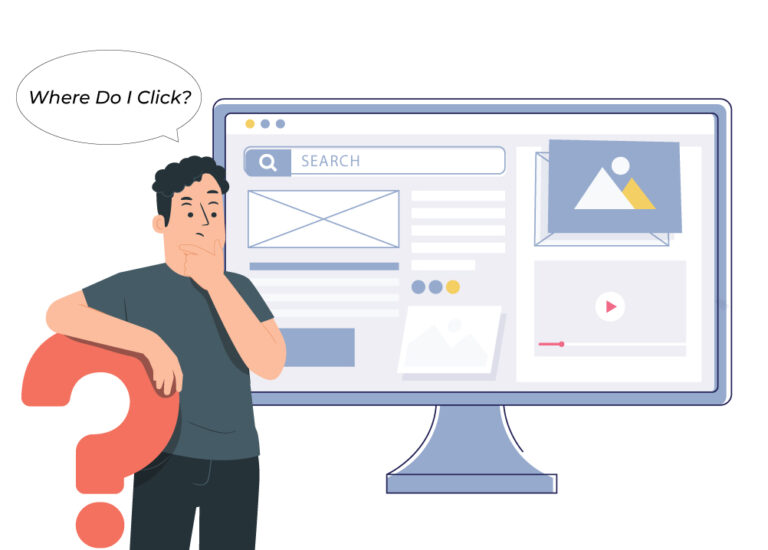
Source: digitalmarketingconcepts.us
User-centered design (UCD) is a crucial methodology ensuring products and services are usable, accessible, and enjoyable for their intended audience. It shifts the focus from the designer’s vision to the needs and expectations of the end-user, leading to more successful and impactful designs. This approach emphasizes empathy, iterative testing, and a deep understanding of user behavior.User-centered design methodologies rely on several key principles to guide the design process.
These principles work together to ensure the final product meets the user’s needs and expectations effectively. Understanding and applying these principles is essential for creating truly user-centric designs.
Key Principles of User-Centered Design
The core principles of user-centered design revolve around understanding and responding to the needs of the target audience. This involves employing a range of techniques to gather user feedback and insights, and using that information to shape design decisions at every stage of the process. These principles are not isolated; they are interconnected and support each other. Ignoring any one principle risks compromising the overall user experience.
Comparison of Award-Focused and User-Focused Design Approaches
The following table highlights the differences between design approaches prioritizing awards versus those prioritizing user needs. It’s important to note that a truly successful design ideally balances both aspects, but the priorities can differ significantly.
| Principle | Award-Focused Approach | User-Focused Approach | Example |
|---|---|---|---|
| User Research | Minimal or superficial user research, focusing on trends and competitor analysis. | Extensive user research, including interviews, usability testing, and surveys, to understand user needs and behaviors. | Award-focused: A website design mimics visually appealing trends seen in award-winning sites, without considering actual user navigation patterns. User-focused: A website design is tested with target users to identify and address navigation difficulties before launch. |
| Iteration and Testing | Limited or no iterative testing; the design is finalized based on the designer’s assumptions. | Multiple rounds of iterative testing and refinement based on user feedback. | Award-focused: A mobile app’s interface is finalized based on the designer’s aesthetic preferences without user testing. User-focused: A mobile app’s interface undergoes several iterations of testing and refinement based on user feedback on ease of use and functionality. |
| Accessibility | Accessibility considerations are often an afterthought, if considered at all. | Accessibility is a core design principle, ensuring usability for users with disabilities. | Award-focused: A website is designed with visually appealing but complex animations, making it difficult for users with visual impairments to navigate. User-focused: A website is designed with clear visual hierarchies, alt text for images, and keyboard navigation for users with disabilities. |
| Functionality | Functionality may be sacrificed for aesthetics or innovative features that are not necessarily useful. | Functionality is prioritized to meet user needs and solve user problems effectively. | Award-focused: A software application boasts a novel but overly complex interface that is difficult to learn and use. User-focused: A software application prioritizes ease of use and intuitive navigation, making it accessible to a wider range of users. |
User Research Informing Design Decisions: A Practical Scenario
Imagine designing a mobile banking app. Award-focused design might prioritize a sleek, minimalist interface with visually stunning graphics, potentially neglecting crucial usability aspects. A user-focused approach would begin with extensive user research. This could involve:* User interviews: Understanding users’ current banking habits, frustrations with existing apps, and desired features. For example, interviews might reveal a strong preference for voice-activated transactions among older users.
Usability testing
Observing users interacting with prototypes to identify pain points and areas for improvement. This might highlight difficulties in navigating the account summary page or completing a funds transfer.
Surveys
Gathering quantitative data on user preferences and demographics. This could reveal the most frequently used banking functions among different age groups.Based on this research, the design team might prioritize:* Larger font sizes and clear visual cues to accommodate older users’ visual needs.
- Simplified navigation and clear instructions to improve the overall user experience.
- Integration of voice-activated commands to cater to user preferences revealed in interviews.
This iterative process, guided by user feedback, would result in a more usable and ultimately successful banking app, even if it might not be the most visually “flashy” design.
Measuring Success Beyond Awards: Design For People Not Awards

Source: nutanix.com
So, you’ve poured your heart and soul into a design project, meticulously crafting a user-centric experience. But what if the coveted industry awards elude you? Does that mean your design is a failure? Absolutely not. True design success lies far beyond the glitter of award ceremonies.
It’s measured in the tangible impact your design has on real users and the overall success of the product or service it supports.This means shifting our focus from external validation to internal metrics that truly reflect the effectiveness and value of our work. We need to establish a robust system for tracking and analyzing data that demonstrates how well our designs meet user needs and achieve business objectives.
This isn’t about downplaying the significance of awards; it’s about building a more comprehensive and reliable framework for assessing design quality.
User Feedback Analysis: A Cornerstone of Design Evaluation
Understanding user behavior and satisfaction is paramount. Collecting and analyzing user feedback provides invaluable insights into the effectiveness of our design choices. This feedback can come in various forms: surveys, user interviews, usability testing, A/B testing results, and even social media comments. Analyzing this data allows us to identify areas of strength and weakness in the design, guiding iterative improvements and ultimately leading to a better user experience.
For example, a high negative sentiment score in post-launch surveys might indicate a usability problem with a specific feature, prompting a redesign to improve user flow and reduce frustration. Conversely, positive feedback on a new design element can validate our design decisions and inspire future iterations.
I’ve always believed in designing for people, not for awards; the genuine connection is far more rewarding. That’s why understanding your audience is key, and a great way to do that is by mastering video, which is why I recently dove deep into getting it on with youtube to improve my reach. Ultimately, though, the goal remains the same: creating designs that resonate with real users, not just judges.
Key Performance Indicators (KPIs) for User Satisfaction and Usability, Design for people not awards
To effectively track the success of our designs, we need to establish a system for monitoring key performance indicators (KPIs). These metrics should directly reflect user satisfaction and product usability. A well-designed KPI system allows us to quantify the impact of our design choices and demonstrate their value to stakeholders.We can design a system using a combination of qualitative and quantitative data.
For example:
| KPI | Metric | Data Source | Target |
|---|---|---|---|
| Task Completion Rate | Percentage of users successfully completing key tasks | Usability testing, analytics | >90% |
| User Satisfaction Score (SUS) | Score from a standardized user satisfaction questionnaire | Surveys | >70 |
| Error Rate | Number of errors per user session | Analytics, error logs | <5% |
| Net Promoter Score (NPS) | Measure of customer loyalty and willingness to recommend | Surveys | >70 |
| Bounce Rate | Percentage of users who leave the site after viewing only one page | Website analytics | <20% |
By tracking these KPIs over time, we can identify trends, measure the impact of design changes, and demonstrate the value of our user-centric approach. This data-driven approach moves beyond subjective opinions and provides concrete evidence of design success. Remember, these are just examples, and the specific KPIs will vary depending on the project and its goals. The key is to select metrics that are relevant, measurable, and aligned with the overall objectives.
Case Studies
Let’s delve into some real-world examples of products and services that prioritized user experience and reaped the rewards. These case studies highlight how a user-centric approach can lead to both user satisfaction and business success, proving that design for people, not awards, is a winning strategy. We’ll examine their design approaches, the impact on users, and the resulting business outcomes.
Successful User-Focused Design Examples
The following examples illustrate how focusing on the user leads to tangible positive results. Each case study showcases a different approach, highlighting the versatility and effectiveness of user-centric design principles across various industries.
- Project Name: Mailchimp’s Email Marketing Platform
Design Approach: Mailchimp consistently prioritized intuitive design and user-friendly features. They invested heavily in user research, incorporating feedback at every stage of development. Their interface is known for its simplicity and clarity, even for users with limited technical expertise. They utilized A/B testing extensively to optimize every element of the user experience.User Impact: Mailchimp’s ease of use empowers small businesses and individuals to effectively manage their email marketing campaigns, fostering a sense of empowerment and control. The intuitive interface reduces the learning curve, enabling users to quickly create and send professional-looking emails.
Business Outcome: Mailchimp’s user-centric approach has led to significant market share, brand loyalty, and sustained growth. Their focus on ease of use has attracted a large user base and cemented their position as a leader in the email marketing industry. - Project Name: Duolingo’s Language Learning App
Design Approach: Duolingo employed gamification techniques to make language learning engaging and enjoyable. The app uses a points-based system, rewards, and challenges to motivate users and track progress. The design is visually appealing and uses a clear, concise interface.
User Impact: Duolingo has made language learning accessible and fun for millions of users worldwide.The gamified approach helps users stay motivated and achieve their learning goals. The app provides a positive and rewarding learning experience.
Business Outcome: Duolingo’s success is a testament to the power of user-centric design in the education sector. Its gamified approach has resulted in a large and engaged user base, leading to significant growth and a strong brand reputation. - Project Name: Airbnb’s Accommodation Booking Platform
Design Approach: Airbnb focused on creating a platform that fostered trust and facilitated seamless communication between hosts and guests. High-quality photos, detailed descriptions, and user reviews are central to the platform’s design. The booking process is designed to be straightforward and secure.
User Impact: Airbnb revolutionized the travel industry by providing users with a wide range of unique and affordable accommodation options.The platform empowers users to connect with hosts and discover authentic travel experiences. The emphasis on reviews builds trust and facilitates informed decision-making.
Business Outcome: Airbnb’s user-centric design has transformed the travel industry and created a multi-billion dollar business. The platform’s focus on user experience has fostered strong user loyalty and enabled rapid growth.
The Role of Empathy in Design
Empathy is the cornerstone of truly human-centered design. It’s not just about understanding user needs; it’s about feeling them, stepping into their shoes, and experiencing the world from their perspective. Without empathy, designers risk creating solutions that are technically sound but ultimately fail to resonate with their target audience, leading to low adoption rates and user frustration. A design that ignores the emotional and experiential aspects of a user’s journey is simply incomplete.Empathy allows designers to move beyond surface-level observations and delve into the deeper motivations, anxieties, and aspirations that shape user behavior.
It fuels the creation of designs that not only meet functional requirements but also address the emotional needs and context of the user. This understanding is crucial for crafting intuitive, enjoyable, and ultimately successful products and services.
Techniques for Cultivating Empathy
Developing empathy is an ongoing process, requiring conscious effort and a commitment to understanding others. Several practical techniques can help designers cultivate this crucial skill. These techniques move beyond simple user interviews and actively encourage a deeper understanding of the user’s world.
One powerful technique is user shadowing. This involves spending time observing users in their natural environment as they interact with existing products or perform tasks related to the design project. This immersive approach provides invaluable insights into their actual behavior, challenges, and unspoken needs that might not surface in traditional interviews. For example, shadowing a librarian to understand their workflow could reveal unexpected pain points in the library’s digital catalog system.
Another effective approach is persona development. Creating detailed, realistic representations of target users, complete with backgrounds, goals, frustrations, and motivations, helps designers personalize the design process. These personas are not just demographic profiles; they are richly detailed stories that bring the user to life, enabling designers to make more informed design choices. For instance, a persona might detail the daily routine of a busy working parent, highlighting their limited time and need for efficient tools.
Finally, empathy mapping offers a structured approach to organizing and visualizing the user’s experience. This involves creating a visual representation of the user’s thoughts, feelings, actions, and pain points at various stages of interaction with the product or service. This visual aid helps designers identify areas where empathy is most needed and informs design decisions based on a comprehensive understanding of the user’s emotional journey.
Incorporating Diverse Perspectives
Design solutions that cater solely to a homogenous user group are inherently limited. Incorporating diverse perspectives is paramount to creating inclusive and accessible designs that resonate with a wider audience. This involves actively seeking out and considering the needs and experiences of users from various backgrounds, abilities, and cultural contexts.
Ignoring diversity leads to exclusionary designs. For example, a website designed without consideration for users with visual impairments might lack sufficient alt text for images, making it inaccessible to screen reader users. Similarly, a mobile application designed without considering users with motor impairments might lack sufficient touch target sizes, hindering usability. Actively seeking input from diverse groups, conducting usability testing with diverse participants, and utilizing inclusive design principles are essential to ensure that design solutions are genuinely beneficial to everyone.
Understanding cultural nuances is also crucial. Design elements that are perfectly acceptable in one culture might be offensive or confusing in another. For instance, color choices can carry different symbolic meanings across cultures, and the way information is presented might need to be adapted to suit different cultural preferences and reading habits. By actively seeking feedback from diverse groups and integrating their perspectives into the design process, designers can create products and services that are not only inclusive but also globally relevant and appealing.
Ethical Considerations in Design
Prioritizing user needs is paramount in ethical design, yet the allure of awards can sometimes overshadow this crucial aspect. The pursuit of accolades, while potentially beneficial for career advancement, can lead to design choices that compromise user experience and even broader societal well-being. This section explores the ethical dilemmas inherent in this conflict and Artikels responsible design practices.The pressure to win design awards can incentivize designers to create visually stunning or technically impressive products that lack practical usability or address genuine user needs.
This can manifest in overly complex interfaces, prioritizing aesthetics over functionality, or neglecting accessibility for users with disabilities. Furthermore, the focus on novelty and innovation for award-winning designs might lead to the creation of products with short lifespans, contributing to electronic waste and unsustainable consumption patterns. The ethical implications extend beyond individual users; poorly designed systems can perpetuate inequalities and exacerbate existing societal problems.
Ethical Dilemmas in Award-Driven Design
Focusing solely on award criteria can create several ethical conflicts. For example, a designer might choose to implement a visually striking but confusing user interface to impress judges, sacrificing user experience and potentially leading to frustration and task failure. Another example is the development of a product with unsustainable materials or manufacturing processes to achieve a specific aesthetic, ignoring the environmental consequences.
The temptation to cut corners on accessibility features to streamline the design process for award submissions is also a significant ethical concern. These actions, driven by the pursuit of recognition, ultimately undermine the ethical responsibility of the designer to create beneficial and inclusive solutions.
Responsible Design Practices for Broader Societal Impact
Responsible design necessitates a holistic approach that considers the long-term implications of design choices on individuals and society. This involves moving beyond a purely aesthetic or functional assessment and encompassing ethical, social, and environmental factors. Designers should strive to create products and services that promote inclusivity, accessibility, sustainability, and equitable access to technology. This means actively seeking diverse perspectives throughout the design process, conducting thorough user research to understand diverse needs and contexts, and critically evaluating the potential environmental and social impacts of the design.
Ethical Guidelines for Designers
The following guidelines provide a framework for ethical decision-making in design:
Prioritizing user needs above all else is crucial. Designers should always consider the user’s experience, accessibility requirements, and overall well-being. This involves thorough user research and iterative testing to ensure the design meets the needs of its intended audience.
- Prioritize user needs and accessibility: Ensure designs are usable, accessible, and inclusive for all users, regardless of their abilities or backgrounds.
- Consider environmental impact: Minimize the environmental footprint of the design through sustainable material choices, efficient manufacturing processes, and design for longevity.
- Promote inclusivity and equity: Design solutions that address the needs of diverse user groups and avoid perpetuating existing inequalities.
- Transparency and accountability: Be transparent about design choices and their potential impacts. Take responsibility for the consequences of design decisions.
- Continuous learning and improvement: Stay updated on ethical considerations in design and continuously strive to improve design practices.
Long-Term Sustainability and User Needs
Designing for longevity isn’t just about creating a visually appealing product; it’s about building something that genuinely meets the evolving needs of its users. A product’s lifespan is directly tied to its ability to remain relevant and useful over time, and user-centric design is the key to achieving this long-term sustainability. Ignoring user needs results in products that quickly become obsolete, leading to waste and ultimately, unsustainable practices.Focusing on user needs contributes to the long-term sustainability of a product or service by ensuring its continued relevance and value.
When a product is designed with the user at its core, it’s more likely to adapt to changing user behaviors and technological advancements. This adaptability allows the product to remain competitive and useful for an extended period, reducing the need for frequent replacements and minimizing environmental impact. For example, a well-designed piece of software that allows for easy updates and customization is more likely to be used for years than a static application that becomes outdated quickly.
Examples of Enduring User-Centric Designs
The enduring success of certain products demonstrates the power of a user-centric approach. Consider the enduring popularity of the LEGO brick. Its simple, intuitive design allows for limitless creative possibilities, appealing to generations of users. The consistent feedback from users has allowed LEGO to continuously adapt and expand its product line, ensuring its relevance in a constantly evolving toy market.
Another example is the ubiquitous Moleskine notebook. Its straightforward design—simple, high-quality paper bound in a durable cover—caters to a wide range of users, from artists to students to professionals. Its consistent quality and adaptability to diverse needs have ensured its continued popularity for decades. These examples showcase how understanding and responding to user needs fosters long-term success and sustainability.
User Feedback and Iterative Improvements
User feedback is the lifeblood of long-term product development. Regularly collecting and analyzing user feedback, whether through surveys, interviews, or usability testing, allows designers to identify areas for improvement and make necessary adjustments. This iterative process ensures that the product continues to meet the evolving needs of its users, extending its lifespan and minimizing waste. For instance, a software company might release a beta version of its product, gather user feedback on its usability and features, and then incorporate those insights into subsequent releases.
This continuous feedback loop allows the product to evolve and remain relevant, ensuring its long-term sustainability. Ignoring user feedback, on the other hand, risks creating a product that quickly becomes obsolete and is ultimately discarded.
Summary
Ultimately, prioritizing people over awards isn’t just a trend; it’s a fundamental shift in how we approach design. By focusing on user needs, understanding their context, and embracing empathy, we can create designs that are not only beautiful but also effective, ethical, and sustainable. The true measure of success isn’t a shiny trophy on a shelf, but the positive impact our designs have on the lives of the people who use them.
Let’s build a future where design truly serves humanity.
FAQ Compilation
What if my design is beautiful but doesn’t perform well?
A beautiful design that fails to meet user needs is ultimately a failure. Prioritize functionality and usability; aesthetics should enhance, not overshadow, the user experience.
How can I measure user satisfaction effectively?
Use a combination of methods: user surveys, A/B testing, usability testing, and analytics tracking key metrics like task completion rates and error rates.
How do I balance user needs with business goals?
User needs and business goals aren’t mutually exclusive. Understanding user needs can inform strategies that improve business outcomes. Effective user research helps identify solutions that satisfy both.
What are some examples of design awards that prioritized aesthetics over usability?
Many “award-winning” designs in the past have focused heavily on aesthetics, resulting in interfaces that were difficult to navigate or understand. A critical eye is needed to differentiate truly user-focused design from flashy but impractical designs.
